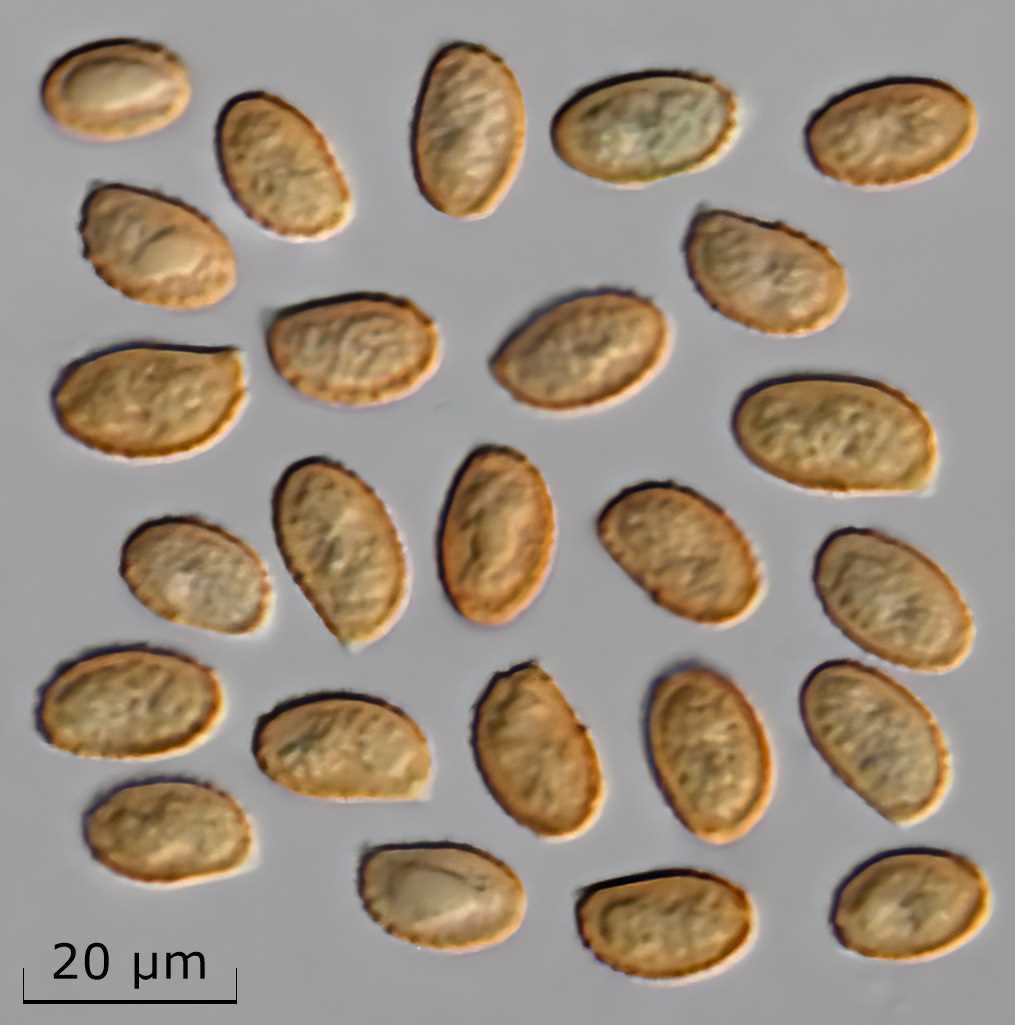|
Gymnopilus Fulviconicus
''Gymnopilus fulviconicus'' is a species of mushroom in the family Hymenogastraceae. See also List of ''Gymnopilus'' species External links *Gymnopilus fulviconicus' at Index Fungorum ''Index Fungorum'' is an international project to index all formal names (scientific names) in the fungus kingdom. As of 2015, the project is based at the Royal Botanic Gardens, Kew, one of three partners along with Landcare Research and th ... fulviconicus Taxa named by William Alphonso Murrill Fungus species {{hymenogastraceae-stub ... [...More Info...] [...Related Items...] OR: [Wikipedia] [Google] [Baidu] |
William Alphonso Murrill
William Alphonso Murrill (October 13, 1869 – December 25, 1957) was an American mycologist, known for his contributions to the knowledge of the Agaricales and Polyporaceae. In 1904, he became the assistant Curator at the New York Botanical Garden (NYBG). He, along with the NYBG, founded the journal ''Mycologia'' and was its first editor for 16 years. Murrill was known to travel extensively to describe the mycota of Europe and the Americas. He traveled along the East Coast, Pacific Coast, Mexico and the Caribbean. Although Murrill was a very influential person at the NYBG, having worked his way up to become assistant director in 1908, his rather eccentric personality caused problems with his job. He went on annual collecting trips to Mexico, the Caribbean, Europe, and South America, sometimes, without informing any of his colleagues prior. These trips resulted in a cumulative total of 70,000 specimens, 1,400 of which are deposited in the NYBG.William Alphonso Murrill Records. ( ... [...More Info...] [...Related Items...] OR: [Wikipedia] [Google] [Baidu] |
Mushroom
A mushroom or toadstool is the fleshy, spore-bearing Sporocarp (fungi), fruiting body of a fungus, typically produced above ground on soil or another food source. ''Toadstool'' generally refers to a poisonous mushroom. The standard for the name "mushroom" is the cultivated white button mushroom, ''Agaricus bisporus''; hence, the word "mushroom" is most often applied to those fungi (Basidiomycota, Agaricomycetes) that have a stem (Stipe (mycology), stipe), a cap (Pileus (mycology), pileus), and gills (lamellae, sing. Lamella (mycology), lamella) on the underside of the cap. "Mushroom" also describes a variety of other gilled fungi, with or without stems; therefore the term is used to describe the fleshy fruiting bodies of some Ascomycota. The gills produce microscopic Spore#Fungi, spores which help the fungus spread across the ground or its occupant surface. Forms deviating from the standard Morphology (biology), morphology usually have more specific names, such as "bolete", " ... [...More Info...] [...Related Items...] OR: [Wikipedia] [Google] [Baidu] |
Hymenogastraceae
The Hymenogastraceae is a family of fungi in the order Agaricales with both agaric and false-truffle shaped fruitbodies. Formerly, prior to molecular analyses, the family was restricted to the false-truffle genera. The mushroom genus '' Psilocybe'' in the ''Hymenogastraceae'' is now restricted to the hallucinogenic species while nonhallucinogenic former species are largely in the genus '' Deconica'' classified in the Strophariaceae. One of the two known species of '' Wakefieldia'' has been found recently to belong to this family but formal transfer cannot be made until the phylogeny of the type species of the genus is resolved. '' Psathyloma'', added to the family in 2016, was circumscribed to contain two agarics found in New Zealand. Genera *'' Alnicola'' (12 species) *'' Dendrogaster'' (1 species) *'' Flammula'' (113 species) *'' Galera'' (4 species) *'' Galerina'' (307 species) *'' Galerula'' (3 species) *'' Gymnopilus'' (209 species) *''Hebeloma ''Hebeloma'' is a genu ... [...More Info...] [...Related Items...] OR: [Wikipedia] [Google] [Baidu] |
List Of Gymnopilus Species
This is a list of species in the agaric fungi genus ''Gymnopilus''. There are about 200 species in the widespread genus. *'' G. abramsii'' Murrill (1917) *'' G. aculeatus'' (Bres. & Roum.) Singer (1951) *'' G. acystidiatus'' Guzm.-Dáv. & Guzmán (1991) *'' G. aeruginosus'' (Peck) Singer (1951) *'' G. alabamensis'' Murrill (1917) *'' G. alienus'' (Peck) Murrill (1917) *'' G. allantopus'' (Berk.) Pegler (1965) *'' G. alpinus'' (Singer) Singer (1951) *'' G. amarissimus'' Murrill (1941) *'' G. angustifolius'' Hesler (1969) *'' G. anomalus'' B.J. Rees (2002) *'' G. arenicola'' Hesler (1969) *'' G. arenophilus'' A. Ortega & Esteve-Rav. (2005) *'' G. areolatus'' Murrill (1943) *'' G. armillatus'' Murrill (1940) *'' G. aromaticus'' Murrill Murrill (1917) *'' G. aurantiacus'' Hesler (1969) *'' G. aurantiobrunneus'' Z.S. Bi (1986) *'' G. aurantiophyllus'' Hesler (1969) *'' G. aureobrunneus'' (Berk. & M.A. Curtis) Murrill *'' G. austropicreus'' B.J. Rees (2001) *'' G. austr ... [...More Info...] [...Related Items...] OR: [Wikipedia] [Google] [Baidu] |
Index Fungorum
''Index Fungorum'' is an international project to index all formal names (scientific names) in the fungus kingdom. As of 2015, the project is based at the Royal Botanic Gardens, Kew, one of three partners along with Landcare Research and the Institute of Microbiology, Chinese Academy of Sciences. It is somewhat comparable to the International Plant Names Index (IPNI), in which the Royal Botanic Gardens is also involved. A difference is that where IPNI does not indicate correct names, the ''Index Fungorum'' does indicate the status of a name. In the returns from the search page, a currently correct name is indicated in green, while others are in blue (a few, aberrant usages of names are indicated in red). All names are linked to pages giving the correct name, with lists of synonyms. ''Index Fungorum'' is one of three nomenclatural repositories recognized by the Nomenclature Committee for Fungi; the others are '' MycoBank'' and '' Fungal Names''. As of 2023, over a millio ... [...More Info...] [...Related Items...] OR: [Wikipedia] [Google] [Baidu] |
Gymnopilus
''Gymnopilus'' is a genus of gilled mushrooms within the fungal family Hymenogastraceae containing over 200 rusty-orange spored mushroom species. Description The basidiocarp, fruit body is typically reddish brown to rusty orange to yellow, medium to large, often with a well-developed partial veil, veil. Similar genera Members of ''Pholiota'' and ''Cortinarius'' are easy to confuse with ''Gymnopilus''. ''Pholiota'' can be distinguished by its viscid pileus (mycology), cap and duller (brown to cinnamon brown) basidiospore, spores, and ''Cortinarius'' grows on the ground. Beginners can confuse ''Gymnopilus'' with ''Galerina'', which contains deadly Mushroom poisoning, poisonous species. Taxonomy ''Gymnopilus'' was formerly divided among ''Pholiota'' and the defunct genus ''Flammula''. The genus has over 200 species worldwide. Psychoactive species Fourteen members of ''Gymnopilus'' contain psilocybin, although their bitter taste often deters recreational users. These spe ... [...More Info...] [...Related Items...] OR: [Wikipedia] [Google] [Baidu] |
Taxa Named By William Alphonso Murrill
In biology, a taxon (back-formation from ''taxonomy''; : taxa) is a group of one or more populations of an organism or organisms seen by taxonomists to form a unit. Although neither is required, a taxon is usually known by a particular name and given a particular ranking, especially if and when it is accepted or becomes established. It is very common, however, for taxonomists to remain at odds over what belongs to a taxon and the criteria used for inclusion, especially in the context of rank-based (" Linnaean") nomenclature (much less so under phylogenetic nomenclature). If a taxon is given a formal scientific name, its use is then governed by one of the nomenclature codes specifying which scientific name is correct for a particular grouping. Initial attempts at classifying and ordering organisms (plants and animals) were presumably set forth in prehistoric times by hunter-gatherers, as suggested by the fairly sophisticated folk taxonomies. Much later, Aristotle, and later sti ... [...More Info...] [...Related Items...] OR: [Wikipedia] [Google] [Baidu] |


